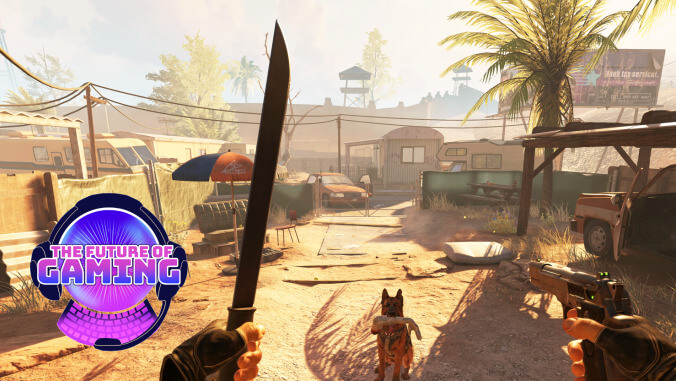Arizona Sunshine 2 and The 7th Guest VR have us asking: Is VR still the future of gaming?
We talked to developers on two of this year's biggest VR titles about what's ahead for virtual reality

This story is part of our new Future of Gaming series, a three-site look at gaming’s most pioneering technologies, players, and makers.
When looking forward at the future of gaming, it’s hard for the gaze not to drift, inevitably, to virtual reality. In some ways, VR has been the “future” of gaming for more than 40 years at this point, even as most of its forays into regular reality have found themselves tied rather anticlimactically to the past, buried in a landfill of TV glasses, Virtual Boys, and other failed attempts at bringing the future to life. It’s only in the last decade or so that tech has caught up to gaming’s Neal Stephenson-esque ambitions, making headsets just ubiquitous and (relatively) inexpensive enough to support a games industry of their own. Even then, though, the results have been limited by boundaries—not just of technology, but of human beings’ willingness to submit to the kind of full vision and sound immersion that virtual reality requires. (To say nothing of games that require exaggerated physical movements, or even just standing for long periods of time.) It’s one of the key reasons VR games tend to be decidedly short: It’s all that most of us can take.
2016’s Arizona Sunshine was an exception to that trend. At four-plus hours in length, Vertigo Games’ technically slick zombie shooter—eventually ported to every VR platform under the sun, even Sony’s typically title-starved original PlayStation VR—was short for its length, but massive for its medium. Its upcoming sequel, Arizona Sunshine 2, which we had to chance to play at a press event in San Francisco last month, promises to be even beefier—and not just because the game lets you jam hamburger patties straight into your virtual face in a quick effort to restore some health after a rough encounter with the undead.
During our hour of time with the new game, guided by game director Peter Duerloo, much emphasis was put on the new features being built into this second title, most especially a canine companion, “Buddy,” who is made integral to play—fetching objects (or severed limbs) for the player, tackling zombies as you desperately work to reload your guns, and cutting down on some of the occasionally oppressive loneliness of the original. (And, arguably, of VR itself, a medium that can leave players isolated at times even when they’re in a crowded room.)
At the same time—and despite some notable glitches, to be expected in a title still in development when we took it out for a spin—we were impressed by how tightly the sequel built on the core gameplay of the first game, delivering zombie shooting that hit a perfect balance between instilling a sensation of mastery and one of being frenetically overwhelmed; there are few things as satisfying as finishing one of the game’s deliberately complicated reload animations just fast enough to pick off the “Fred” bearing down on you, or hurling an improvised mine right into the biggest possible horde. (Don’t worry, Buddy can’t explode along with the ambulatory corpses—which we confirmed by asking, not trying, so don’t get mad.)
But given that we were also decidedly out of breath by the time we got through that opening hour of gameplay, we were also curious about where Duerloo saw VR gaming’s future as a whole: Is there a future where playing in a headset is the norm, while more traditional screen-and-controller-based gaming eventually gives way to the immersive experience? Can VR supplant traditional gaming?
Acknowledging the industry is still “a bit sluggish, in a way,” Duerloo argued that VR certainly could take up that front position, pointing to newer technology like Meta’s Quest 2 that makes it easier for VR to reach the “plug and play” point necessary for players to be able to pick up controllers, toss on a helmet, and be in a game as quickly as with traditional gaming setups. (“[VR] needs to reduce in cost, as well,” Duerloo granted, pointing toward the continued need to build enthusiasm for the medium in order to increase the install base and bring prices down.)
